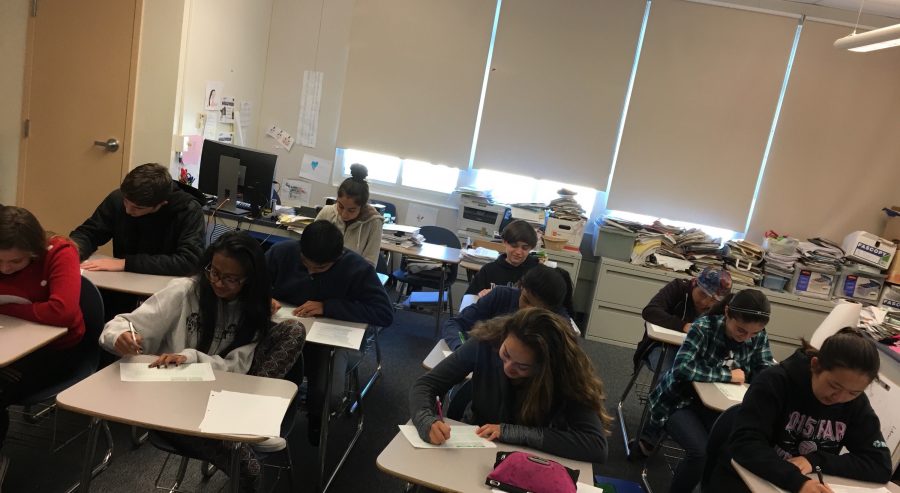The decisions one thinks about the least could be affecting one the most.
In 2007, Cornell University asked 190 participants to estimate the number of food-related decisions they made in a day. These could have ranged from the location to type, or to quantity. The average speculation was 15.
Afterward, participants were asked to catalog each decision as they made it. What resulted was a dramatic increase: 221 decisions were actually being made, leaving 206 decisions unaccounted for.
Psychology teacher Michelle McKee explains that these are unconscious decisions and are very common.
“You make [unconscious] decisions from the moment you get out of bed to the moment you get into bed,” said McKee, “The majority of what we do is totally unconscious.”
Some of these decisions are mostly inconsequential. People memorize them out of habit and think about them less as time goes on. It’s a cycle of life. For example, a student probably doesn’t think about the rate at which they walk to school.
But once we get to school, the decisions start to get important.
This is because unconscious decisions are subject to outside influences. Extraneous factors, such as the choices of our peers, may possess significant influence on our own work due to our lack of scrutiny.
Outside of school, this is common.
“It’s called modeling,” McKee said. “You have a friend who uses a certain word, and now you now use that certain word. All of the sudden, you’re adopting that sort of thing, and you’re not conscious of it.”
Evidence would also suggest that we aren’t aware of these influences. Of the 190 participants surveyed in the Cornell study, only 13 percent were able to recognize the environmental cues that played a part in their 221 decisions.
When it comes to school, however, the effects are amplified.
History teacher David Braunstein cites outlines, a technique he assigns to summarize the content of a textbook chapter as an example.
“If one student notices another wrote more, they might be unconsciously inclined to do the same,” Braunstein said.
This is where problems can arise.
Braunstein said, “Teachers are always working with different students that have different abilities.”
If one student learns at a different level than another, but unconsciously decides to write less based on the work of a peer, it is more difficult for a teacher to help that student.
“Two outlines aren’t going to be the same,” Braunstein said, “But even if you know it because you read it, and you would’ve gotten it right without outlining, someone else could outline for days and still not get the answers right.”
Other assignments compose even more of the academic repertoire. Tests often foretell grades and opportunities.
Sophomore Marco Brocchieri summarizes test taking in a single word: “anxiety.”
This anxiety is often because of cues we pick up unconsciously from our peers.
“[If someone is told that a test is harder than expected], they would be set up for failure because they would have received information that may be truthful, but may not be according to their ability,” said Braunstein.
Likewise, if a student anticipates a test being easy based on the feedback of their peers, this would likely influence their perspective of the test as well.
“If a test is said to be easy,” sophomore Patrick McDonough said, “I’m thinking, ‘maybe this test will be easy.’”
When this happens it can lure students into a sense of false confidence.
“The problem is they might not have the knowledge base to do well on the quiz or on the exam,” said Braunstein.
This possibility is amplified by the information age. The availability of the internet provides even more unconscious influence.
“I think with all of the electronics and devices, there are even more decisions that are being made that are unconscious decisions,” McKee said.
This could mean that the potentialities stretch far outside of academics. Left without the unconscious elements they used to draw on, an entrant of adulthood might be lost.
“They might put something on a resume, or say they can do something that they can’t, and it catches up,” Braunstein said.
Suddenly, all 221 decisions need to be accounted for.
“And then you’re sunk,” said Braunstein.












